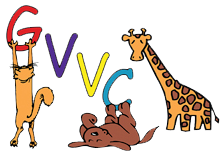Earlier this year I wrote about cats viewed in history as royalty. In a related matter, today we are going to talk about Egypt’s animal mummies.
People and animals were mummified to prepare them for their journey into the afterlife. In many cases, when a member of royalty died, their animals were put to death and buried with them. The animals were wrapped in colored linen, often being placed in wooden coffins, elaborately carved to fit their dimensions.
Zooarchaeology, the study of ancient animal remains is a relatively new science. Through their research, it is clear that animals were revered, even in the time of Pharaohs. Many animals were placed in tombs, and adored and revered by priests, who prayed and made offerings to them. Prayers were often written down, then placed with the animal as it was prepared for mummification. People believed that their animals would convey their prayers over to the “other side”, to the powers that be.
Royalty would often be laid to rest with mummified pieces of meat and fish, so they would have something to eat on their “trip”. The ingredients would be packed with herbs, wrapped in treated linens, then placed in a reed basket, much the same way we pack a picnic basket today (Sorry for the image). Certain species of animals were considered status symbols (dogs, lions, and monkeys make the list) and in many unearthed tombs, there were more mummified animals found than jewels or other signs of wealth. Animal coffins were often made of limestone, and elaborate, painted bejeweled masks placed on the mummies as a sign of their importance.
Some animals, such as the Apis bull, were revered for their association with a particular god. When an Apis died, it was considered a national time of mourning, with people wailing and pulling their hair out as the mummified bull passed them on the way to its tomb.
There is not a great deal of literature that exists, explaining the process of mummification. Modern technology has been a great asset in determining how this mysterious process was created. X rays are used to peer past the ancient linens and chemical spectrometers analyze the materials used to preserve the animals.
Even in ancient Egypt, animals were loved… and time goes on.
